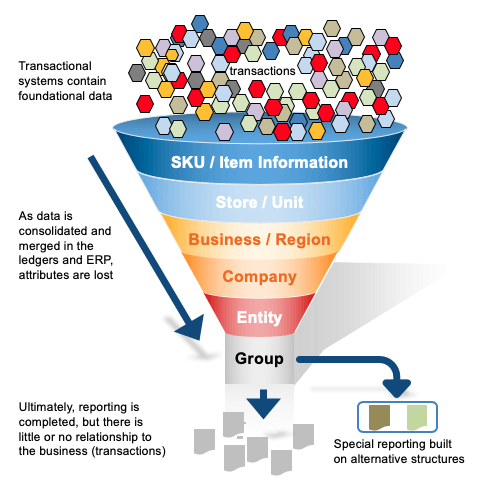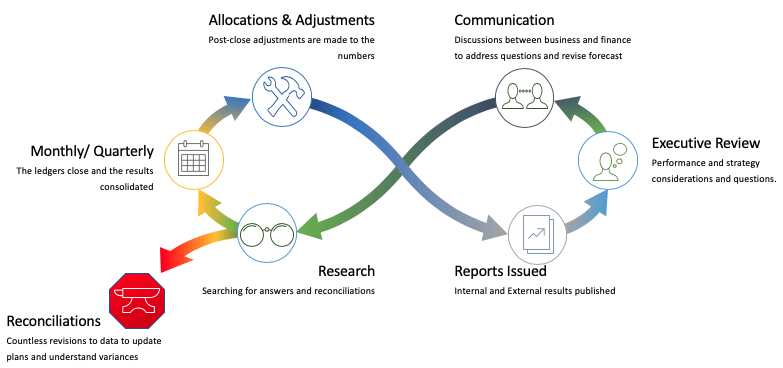Q: Why can't we get insights from our ERP?
Big Footprint...Not Big Data
How ERP's limit data availability
The backbone of countless finance organizations is the ERP. Thanks to their abilities to integrate across businesses, locations, and currencies, ERP’s have become the platform for automating tedious and error-prone manual consolidations. They are the alpha dog in the IT stack, with other business and functional systems beholden to support the integrity and efficiency of the ERP.
As these systems grew in size and stature, speed and storage became concerns. Transactional information was further consolidated and merged with similar data for reporting. Later in the reporting cycle, final adjustments and allocations are often 'top-sided', eliminating any alignment that may have existed between the reported numbers and those in the transactional systems.
To remedy these issues and deliver on the promise of big data, transactional details need to be integrated and organized; only then Artificial Intelligence (AI) and Machine Learning (ML) efforts can be launched. Driver based forecasts in complex environments can be evaluated and adjusted, with external forces modeled and strategies aligned.

Q: Why is everyone so frustrated with our analysis?
THE INFINITE LOOP
Business executives are presented with performance data on a periodic basis, which they are left to interpret, challenge, and adjust the direction of the business. Reporting is notoriously static and generic. Without details, senior executives ask questions and wait for answers. In most organizations, the answers arrive after the next set of reports, rendering both the effort and the answers nearly worthless.
SEPARATION ANXIETY
There are increased calls for Finance to improve customer service. Get closer to the business. In spite of the efforts, business personnel are more frustrated than ever by the delays in gathering information and the lack of details. They don't want more of finance's time, they want direct access to the information. Problem is, finance doesn't have it...adding tension to the relationship on both sides.

